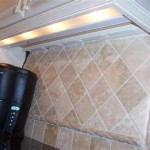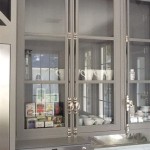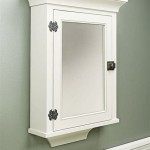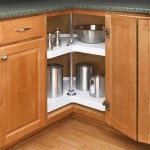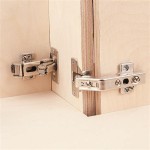The Perfect Dining Room Corner Cabinets For 600 Ml Of Wine
The dining room is often considered the heart of the home, a space where families gather and memories are made. Furniture choices in this room play a significant role in establishing both functionality and aesthetics. Corner cabinets, in particular, offer a practical solution for maximizing space and adding a touch of elegance. When selecting a corner cabinet specifically designed to accommodate 600 ml bottles of wine, several factors must be carefully considered to ensure a perfect fit and harmonious integration with the existing décor.
The increasing popularity of corner cabinets stems from their ability to utilize otherwise underutilized areas of a room. These cabinets can transform awkward angles into valuable storage and display spaces. For wine enthusiasts, a corner cabinet provides a dedicated location to store and showcase their collection, contributing to a more organized and visually appealing dining area. However, simply choosing any corner cabinet will not suffice. The dimensions, materials, style, and interior configuration must be thoughtfully evaluated to effectively store 600 ml wine bottles and complement the overall dining room design.
Understanding the Dimensions and Space Requirements
The primary consideration for selecting a corner cabinet for wine storage is the available space in the dining room. Precise measurements of the corner area are essential to ensure that the chosen cabinet will fit comfortably without obstructing movement or clashing with other furniture. Consider the cabinet's footprint, including its depth, width, and height. Keep in mind that corner cabinets are typically triangular or quarter-circle shaped, demanding careful attention to the dimensions of each side.
When planning for wine storage within the cabinet, the height of the shelves or compartments is crucial. A standard 600 ml wine bottle is approximately 12 inches (30.5 cm) tall. To accommodate these bottles comfortably, shelves should have a minimum clearance of 13 inches (33 cm). Furthermore, consider the depth of the shelves. A bottle’s diameter is around 3 inches (7.6 cm). Shelves should be deep enough to stably hold the bottles, ideally between 4 and 6 inches (10 to 15 cm) in depth. The width of each compartment will dictate how many bottles the cabinet can hold per shelf.
Beyond the internal dimensions, consider the cabinet's external measurements in relation to the room's architecture. Ensure that the cabinet does not impede doorways, windows, or other architectural features. Allow sufficient space for opening the cabinet door without causing obstruction. A well-proportioned cabinet will enhance the room's aesthetic appeal, while an improperly sized one can create a cluttered and unbalanced look.
It's imperative to create a mock-up or utilize space planning software to visualize how the cabinet will integrate into the existing layout. This step will help to identify any potential spatial constraints and prevent costly mistakes. By diligently assessing the available space and correlating it with the cabinet's dimensions, a selection process can be streamlined, focusing on cabinets that meet the requisite spatial criteria.
Selecting Appropriate Materials and Styles
The material and style of the corner cabinet should align with the existing décor of the dining room. Wood is a popular choice, offering both durability and aesthetic versatility. Different wood types, such as oak, maple, cherry, and walnut, provide varying degrees of warmth, texture, and visual appeal. Oak, for instance, is known for its durability and distinctive grain pattern, while cherry offers a richer, more formal appearance. The choice of wood should complement the existing furniture's wood tones and finishes.
Beyond solid wood, engineered wood products, such as MDF (Medium-Density Fiberboard) and plywood, are often used in cabinet construction. These materials are typically more affordable than solid wood and offer greater resistance to warping and cracking. However, it is important to select engineered wood products with high-quality veneers to ensure a durable and aesthetically pleasing finish.
The style of the corner cabinet should also harmonize with the dining room's overall design theme. Traditional dining rooms often feature corner cabinets with ornate carvings, intricate moldings, and antique finishes. These cabinets are typically constructed from dark, rich woods and often include glass doors to showcase the wine collection. Contemporary dining rooms, on the other hand, typically embrace minimalist designs with clean lines, simple forms, and lighter wood tones or painted finishes. Metal accents, such as brushed nickel or stainless steel, can further enhance the contemporary aesthetic.
Transitional styles blend elements of both traditional and contemporary design, offering a versatile option that can complement a variety of dining room aesthetics. Transitional corner cabinets often feature classic shapes with simplified ornamentation and a neutral color palette. These cabinets can be easily integrated into a range of design schemes, providing a cohesive and balanced look.
In addition to wood, glass and metal can be incorporated into the corner cabinet design. Glass doors provide a visual display of the wine collection, while metal accents can add a touch of modernity and sophistication. However, glass doors can also expose the wine to light, which can degrade its quality over time. Therefore, it is important to select glass that is UV-resistant or tinted to protect the wine from harmful rays.
Optimizing Interior Configuration for Wine Storage
The interior configuration of the corner cabinet is critical for ensuring efficient and safe wine storage. Several options are available, each offering distinct advantages and disadvantages. Adjustable shelves provide the greatest flexibility, allowing for the accommodation of different bottle sizes and shapes. These shelves can be easily repositioned to maximize space utilization and accommodate future additions to the wine collection.
Wine racks, specifically designed to hold individual bottles, offer a more organized and space-efficient storage solution. These racks are typically constructed from wood, metal, or a combination of both. The angle at which the bottles are stored is also important. Storing wine bottles horizontally helps to keep the cork moist, preventing it from drying out and causing oxidation. However, horizontal storage can also take up more space than vertical storage.
Some corner cabinets may include a combination of shelves, wine racks, and drawers. Drawers can be used to store wine accessories, such as corkscrews, bottle stoppers, and wine glasses. The addition of drawers adds to the functionality and versatility of the cabinet, making it a more comprehensive storage solution.
Consider the weight capacity of the shelves and racks. Wine bottles can be heavy, particularly when stored in large quantities. Ensure that the cabinet is constructed from sturdy materials and that the shelves and racks are capable of supporting the weight of the wine collection. Reinforce shelves, if necessary, to prevent sagging or collapse.
Temperature and humidity control are generally not a primary concern with dining room wine storage, as the intention is typically short to medium-term storage rather than long-term cellaring. However, if the dining room experiences significant temperature fluctuations or high humidity levels, it may be wise to consider a corner cabinet with climate control features. These cabinets can maintain a consistent temperature and humidity level, ensuring the optimal storage conditions for wine.
Lighting can also enhance the visual appeal of the corner cabinet and highlight the wine collection. Interior lighting, such as LED strips or spotlights, can illuminate the bottles and create a more inviting display. However, it is important to select lighting that does not emit excessive heat or UV radiation, which can damage the wine.
In conclusion, selecting the perfect dining room corner cabinet for 600 ml wine bottles requires careful consideration of various factors, including dimensions, materials, style, and interior configuration. By thoughtfully evaluating these elements, individuals can find a cabinet that maximizes space, complements their décor, and provides a safe and organized storage solution for their wine collection. Investing time in planning and research will ensure that the chosen corner cabinet becomes a valuable and aesthetically pleasing addition to the dining room.

Svopes Corner Industrial Bar Cabinet For Liquor And Glasses Free Standing Farmhouse Wood Coffee Qj23631573211crj2v0 1101 The Home Depot

Svopes Corner Industrial Bar Cabinet For Liquor And Glasses Free Standing Farmhouse Wood Coffee Qj23631573211crj2v0 1101 The Home Depot

Svopes Corner Industrial Bar Cabinet For Liquor And Glasses Free Standing Farmhouse Wood Coffee Qj23631573211crj2v0 1101 The Home Depot

Svopes Corner Industrial Bar Cabinet For Liquor And Glasses Free Standing Farmhouse Wood Coffee Qj23631573211crj2v0 1101 The Home Depot

Funkol 64 96 In X 15 75 34 05 Oak Color Wooden Faux Rattan Wine Cooler W 4 Magnetic Bin Doors And Adjustable Shelves Cabinet359xr The Home Depot

Tileon Brown Walnut Color Modular Wine Bar Cabinet With Storage Shelves Hutch Pantry Organizer Wyhdra344 The Home Depot

Funkol 64 96 In X 15 75 34 05 Oak Color Wooden Faux Rattan Wine Cooler W 4 Magnetic Bin Doors And Adjustable Shelves Cabinet359xr The Home Depot

Stainless Steel Under Bench Dual Zone Glass Door Wine Fridge 152 Litre A Man His Cave

Bar Furniture Hampton Anderson Sc Mattress

Costway Drop Leaf Kitchen Island Trolley Mobile Buffet Serving Cart W Wine Rack
Related Posts

